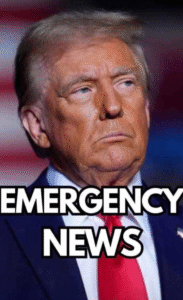
President Donald Trump recently signed a series of executive orders that reflect his administration’s aggressive stance on trade, military identity, and the protection of American citizens abroad. These actions, taken in early September 2025, mark a significant moment in his second term and offer insight into his broader political and strategic vision. Here’s a comprehensive breakdown of the key orders and their implications.
🛃 Executive Order on Tariffs and Trade Security
One of the most sweeping orders signed by Trump modifies the scope of reciprocal tariffs originally imposed in April 2025. This move is framed as a response to a national emergency caused by persistent U.S. trade deficits. The order:
- Adjusts exemptions under Annex II of Executive Order 14257:
- Added: bullion-related articles, critical minerals, and pharmaceuticals under investigation.
- Removed: aluminum hydroxide, resin, and silicone products.
- Introduces the PTAAP Annex (Potential Tariff Adjustments for Aligned Partners):
- Lists goods like aircraft parts, generic pharmaceuticals, and certain agricultural products.
- Allows for tariff reductions if trading partners negotiate reciprocal deals.
Trump also imposed targeted tariffs:
- 20% on China for opioid-related issues.
- 25–35% on Mexico and Canada for drug trafficking concerns.
- 40% on Brazil citing national security threats.
- 25% on India due to its purchases of Russian oil.
- Section 232 tariffs on automobiles, copper, steel, and aluminum.
These measures are part of a broader strategy to reshore manufacturing, strengthen supply chains, and assert economic dominance. Major trade deals with the EU, Japan, and the UK—worth trillions in energy purchases and investments—underscore this push.
⚔️ Executive Order Restoring the “Department of War”
In a symbolic and controversial move, Trump signed an order restoring the title “Department of War” as a secondary name for the Department of Defense. This order:
- Authorizes the use of “Secretary of War” in official and ceremonial contexts.
- Directs the Secretary of Defense to propose a permanent renaming.
- Cites historical victories and George Washington’s quote: “To be prepared for war is one of the most effective means of preserving peace.”
This change coincides with the Army’s 250th anniversary and a recent military parade. It’s intended to project strength and readiness, especially following a decisive strike on Iran’s nuclear infrastructure and record-high military recruitment.
🛂 Executive Order on Wrongful Detentions Abroad
Trump’s third major order addresses the growing issue of Americans being wrongfully detained overseas. It establishes a new designation: State Sponsor of Wrongful Detention, which allows the U.S. to impose:
- Sanctions
- Visa restrictions
- Travel bans
- Export controls
Criteria for designation include:
- Detention of a U.S. national without due process.
- Failure to release detainees after U.S. notification.
- Patterns of unjust detentions involving third-country nationals.
Countries like Iran, China, and Afghanistan are under review. The order is a direct response to what Trump calls “hostage diplomacy.” Since returning to office, his administration claims to have secured 72 releases, including high-profile cases like Marc Fogel and Edan Alexander.
📱 Executive Order Extending TikTok Enforcement Delay
On September 16, Trump signed another order extending the enforcement delay of the Protecting Americans from Foreign Adversary Controlled Applications Act, specifically targeting TikTok. The delay now runs until December 16, 2025, giving the Department of Justice more time to assess compliance and enforcement strategies.
🏛️ Legal and Constitutional Context
Trump’s prolific use of executive orders—over 200 in his second term—has sparked debate about presidential power. Legal scholars emphasize:
- Executive orders must be grounded in existing legal authority (e.g., statutes or Article II of the Constitution).
- They differ from laws, which require Congressional approval.
- While powerful, executive orders can be challenged in court and reversed by future administrations.
🧠 Strategic Themes and Political Messaging
These executive actions reflect several recurring themes in Trump’s governance:
1. America First Foreign Policy
Trump’s orders prioritize U.S. citizens, economic interests, and military strength. The wrongful detention order and aggressive trade policies reinforce this nationalist approach.
2. Symbolism and Identity
Renaming the Department of Defense to the Department of War is a symbolic gesture meant to evoke historical pride and military readiness. It’s also a branding move that aligns with Trump’s rhetoric.
3. Economic Leverage
Tariffs and trade deals are used as tools of negotiation and punishment. Trump’s administration is leveraging economic power to reshape global relationships.
4. Media and Messaging
The signing ceremonies, including one where Trump concealed a bruised hand, are carefully staged. Despite speculation about his health, Trump used the events to project vigor and control.


